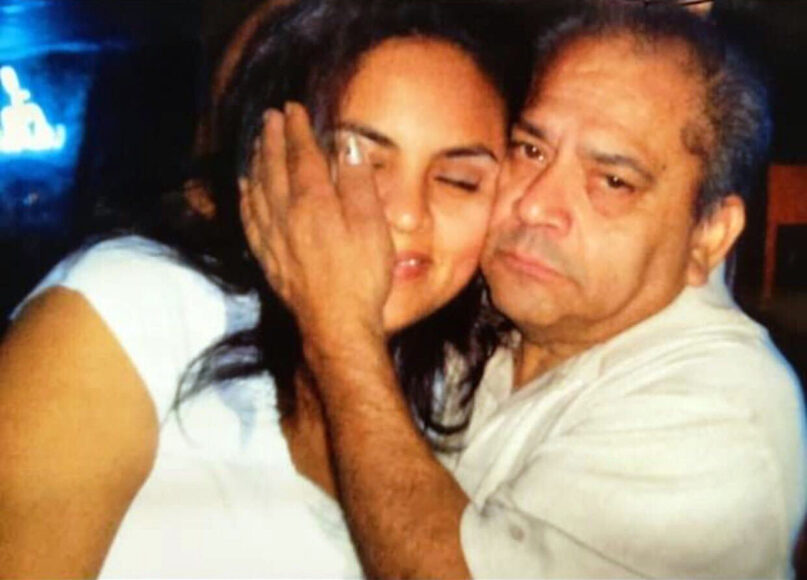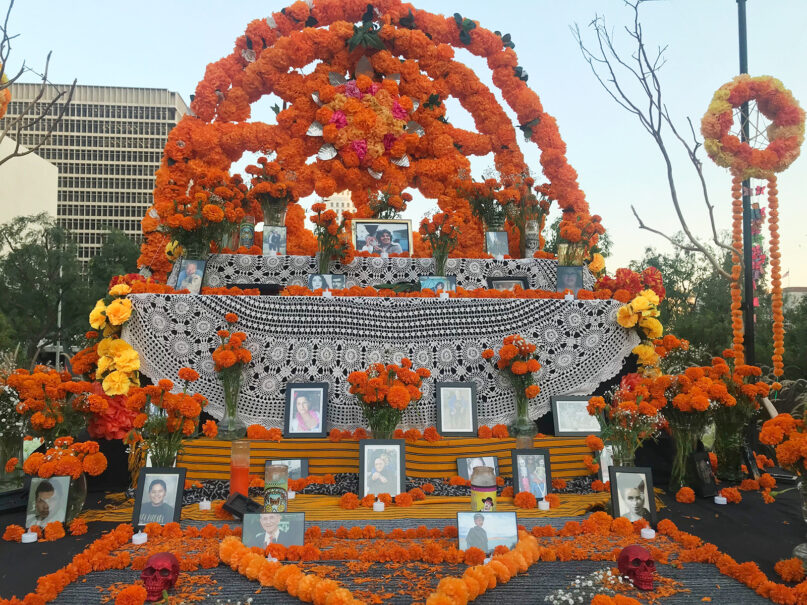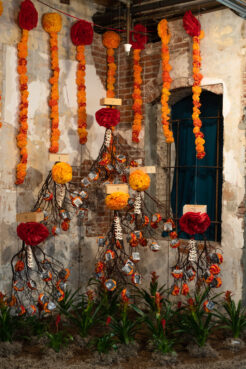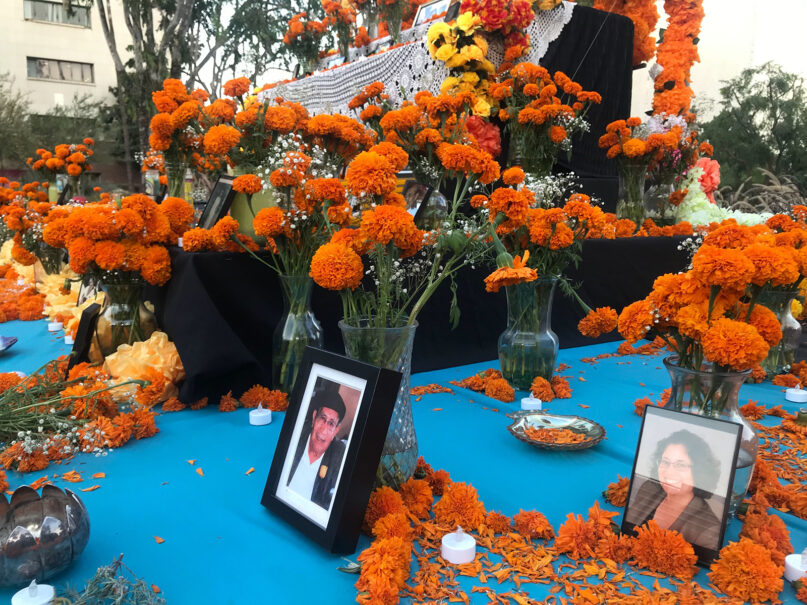LOS ANGELES (RNS) — Concepción Sánchez didn’t get a chance to say a proper goodbye to her 68-year-old father, who died of COVID-19 in September. No one was at his bedside at the hospital — Sánchez’s mother wasn’t allowed in even to sign the paperwork after his death.
“We couldn’t visit him. We couldn’t be with him in his last moments,” said a tearful Sánchez.
At his funeral the casket remained closed, and at the cemetery the family viewed the burial from a distance.
This Día de los Muertos season Sánchez is seeking closure.
“I think it’s a good opportunity, spiritually, to say goodbye and to heal faster,” Sánchez said.
Día de los Muertos, or Day of the Dead, is one of Mexico’s oldest Indigenous celebrations, during which it’s believed the dead are allowed to visit and comfort the living, and delight in the ofrendas, or offerings, left for them on makeshift altars. Recently popularized by the Pixar movie “Coco,” Día de los Muertos is observed on All Saints’ Day and All Souls’ Day, Nov. 1 and 2.
As COVID-19 has disproportionately impacted Latino communities across the United States, many will be mourning and celebrating loved ones who died from the virus by leaving offerings and altars.

Concepción Sánchez with her father, Blas Mena Espinoza. Courtesy photo
Altars come in all shapes and sizes and are decorated with photos, mementos, food and flowers, particularly marigolds known as cempazuchitl, or flores de muerto — flowers of the dead. Mexican bakeries prepare sweet pan de muerto (bread of the dead) that many present on their altars.
In the altar she’s helping build with others from St. Genevieve Catholic Church who have lost loved ones to the coronavirus, Sánchez is hoping to represent her father’s optimism and work ethic.
She’ll also be including a photo of her father at Chuck E. Cheese that reminds Sánchez of how he loved to “just be a kid.” The husband and father of seven always stressed that “no matter what you did in life, enjoy your life,” Sánchez said.
Sánchez will also display her father’s small woodwork sculptures that he made to sell at yard sales. Her father, an immigrant from Jalisco, Mexico, worked in construction for 35 years until his leg was amputated due to diabetes. Even retired and in a wheelchair, he always kept busy, she said.
Though her father’s death has been devastating for Sánchez, she said she’ll always “remember all the good things he showed us, he taught us.”

A large community altar, designed by Ofelia Esparza and Rosanna Esparza Ahrens, is displayed at Grand Park in downtown Los Angeles on Oct. 28, 2020. The altar honors all who have passed, including those who died of COVID-19. RNS photo by Alejandra Molina
The altar from St. Genevieve, in LA’s Panorama City neighborhood, is part of the Archdiocese of Los Angeles’ Día de los Muertos Nov. 1 virtual celebration and will be one of seven altars that will be displayed for public viewing Nov. 2-9 at Calvary Cemetery, a Catholic cemetery in East Los Angeles.
For some Catholics, Day of the Dead is a way to reconnect with pre-Hispanic traditions that perceive death as a natural phase in the sequence of life. It’s connected to the notion that death has been overcome by Jesus Christ.
Paulino Juarez, a deacon at St. Genevieve, said he’s seen how isolated and afraid parishioners have felt after losing family to COVID-19. He’s accompanied them at burials, Zoom services and gatherings outside the church.
The Day of the Dead celebrates the joy of life more than the sorrow of loss, said Juarez. “It’s a way to remember our loved ones and the moments we spent with them,” he said.
“This celebration helps us understand that those loved ones have transformed. … It’s not an end, it’s a transformation,” he said.
In East Los Angeles, Self Help Graphics & Art organizes one of the most popular Día de los Muertos events in the city. The celebrations, which have been held for nearly five decades, are filled with Aztec dancers, processions, blessings, art, food and music. This year’s event will be a virtual tour, with some altars publicly displayed at Los Angeles’ Grand Park. A Nov. 1 celebration will also be streamed on YouTube.

The Roots of Our Resistance altar, by Consuelo Flores, on display at Self Help Graphics in East Los Angeles, is dedicated to people who have died from COVID-19. Photo courtesy of Jennifer Cuevas
Altars this year reflect the different ways COVID-19 has struck working-class Latinos.
One altar at Self Help Graphics features upside-down branches decorated with marigolds and black-and-white photos of essential workers of color. At the bottom of the branches, flowers are rising up.
“It’s about our resilience. Through death there is rebirth,” said Marvella Muro, Self Help Graphics’ director of artistic programs and education.
Other altars take aim at the housing crisis, making the case that the high cost of living is a health issue for residents who can become homeless due to the pandemic. The altar is decorated with miniature homes, paper flowers and a tiny sign planted on the altar’s fake grass that reads “Housing is Health.”
One large altar at Grand Park, embellished with dozens of marigolds, features photos of people who died from COVID-19 or of other natural causes.
“I think with Day of the Dead, it’s a bittersweet celebration because it’s about loss, but it’s also about honoring and remembering and celebrating the individual,” Muro said.
Muro said the mere act of building an altar can be therapeutic.
“Talking and sharing about COVID, the situations that we’re experiencing, economically and health wise … that process is healing,” Muro said.





